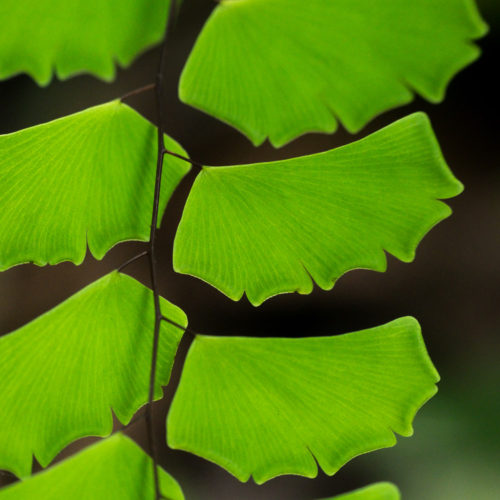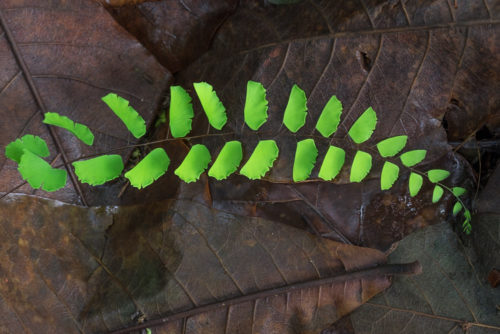
How do you find a fresh angle to shoot from when all been taken? That’s a common question I get asked as a photography teacher. How do those pros do it? Why are their images so different from mine? Answer to this is pretty simple; they never get it with a single shot. They use several angles or viewpoints and try almost all of them until they hit the one, they find is most attractive. If you too implement this technique, whenever you have control over the subject, you should be able to achieve that type of result. The key here is varying the angles and trying to think outside the box. Re-positioning your subject within the viewfinder frame and changing the camera viewpoint or camera angle are two simple ways of controlling composition. Trying to photograph same subject from various angles is an exercise which really helps you to sharpen your skills as well as helps you to get the right composition you want.

Photographing from a different viewpoint or camera angle can often add drama and excitement or even bring out an unusual aspect of a subject. Most of the subjects you photograph are three-dimensional and should be photographed from an angle (to the right or left of and/or from higher or lower than the subject) that allows the viewer to see more than one side of the subject. Only way you can achieve finding that angle is to study the subject from different sides and angles. Walk around the subject and look at it from all viewpoints. See it from elevated and low positions as well as from eye level to find the best composition. This greatly assists in composing the subject for the best balance and helps to select a background that compliments, not distracts from the subject. If there is scope to change Depth of field, background, focal length, subject magnification or colour of the background, try each of them and you will be richly rewarded with final result which many a times surprises you.

Monsoon this year has been pretty good and I saw lots of Adiantum philippense ferns on the rain exposed laterite stone walls of my garden. With my Fuji camera and assorted lenses, I tried various angles and focal lengths to capture them. This blog will illustrate how I am able to get totally different views I want by change Depth of field, background, focal length, subject magnification or colour of the background, while keeping the subject same. None of them were propped up. All the captures are in natural surrounding using natural light. I did not manipulate or create artificial backgrounds here to enhance the effect. Ferns are not the same and I used their original background in each instance. The whole set was shot over different time of the day and on different days.

I was using Fujifilm X-T1 and Fujifilm X-T10 bodies with Fujifilm XF 35mm F1.4 R and Fujifilm XF 50-140mm F2.8 R LM Lens. I also used Raynox DCR-250 Super Macro Snap-On Lens for closeup capture on Fujifilm XF 35mm F1.4 R.

Adiantum philippense is commonly known as ‘Hamspadi’ or ‘Walking Maiden hair fern’. Adiantum, is a genus of about 200 species of ferns in the Vittarioideae subfamily of the family Pteridaceae, though some researchers place it in its own family, Adiantaceae. The genus name comes from Greek, meaning “not wetting”, referring to the fronds’ ability to shed water without becoming wet.

Adiantum philippense is widely distributed in many parts of India and used as an ornamental plant. It is ethnomedicinally used in bleeding diseases, burning sensation, erysipelas, epileptic fits, dysentery, and elephantiasis. It has been reported that the dried whole plant has been used as a medicine for bronchitis and cough. Adiantum philippense is also reported to have anti- bacterial, hypo-glycemic and anti-fungal activity.

Adiantum philippense is a small and delicate fern. Rhizome short, sub-erect, the apex covered with scales, scales linear, a little broader at base. Stipes are tufted, slender, dark brown, shining, glabrous, 5 to 21 centimeters long. Fronds tufted, herbaceous, arching. Stipe up to 20 cm long, dark brown to black, shiny, glabrous.

Lamina pinnate, linear to lance late in outline; 36 × 11 cm, excluding a glabrous extension of the rhachis of varying length, which often ends in a proliferous bud or lamina with a terminal pinna. Rhachis, petiole and pinnae glabrous. Pinnae numerous (up to 15 pairs), persistent, lunulate, petiolate, alternate; 25-50 × 13-25 mm, reduced in size towards the apex, the midrib forms the lower margin, outer margin irregularly incised into broad lobes. Sori are oblong to linear, and as long as the lobes are broad.

They generally prefer humus-rich, moist, well-drained sites, ranging from bottomland soils to vertical rock walls. Many species are especially known for growing on rock walls around waterfalls and water seepage areas.



Excellent photography, Sir.
I’ll try and learn from you
-Ulhas
Interesting. Different POV for similar subjects.
Thanks,Ullas Bhat & Gopalkrishna Baliga your encouragement is the driving force behind me.
Inspiring for and from a meticulous photo-artist…!
Absolutely fascinating images… I only with this plant was a little easier to grow …